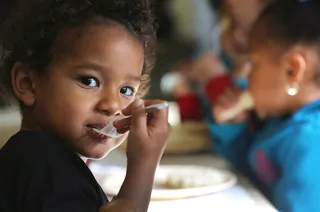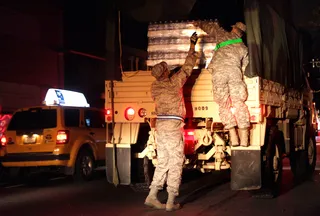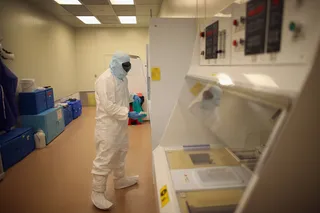What Sequester Means in the Real World
How domestic program cuts could affect ordinary Americans.

1 / 14
On the Block - We keep hearing the terms daily, "sequester" "automatic budget cuts" "shutdown," but what does that mean in the real world? A poll from the political newspaper The Hill found that two-thirds of Americans don't know what sequester means. Webster would define sequester as $85 billion in spending cuts that would hit most federal programs and fall hardest on the military and take effect March 1. — Joyce Jones (Photo: Alex Wong/Getty Images)

2 / 14
How Did We Get Here? - Going back to 2011, congressional Republicans wanted spending cuts in exchange for raising the debt ceiling. They couldn't agree and hoped they'd make a deal by 2013, and if they didn't, automatic cuts would go into effect. Well, here we are and cuts are a'coming. Click through to see how those cuts could affect you.(Photo: Win McNamee/Getty Images)

3 / 14
Unemployment Benefits - Out-of-work Americans receiving emergency unemployment benefits could experience a 9.4 percent reduction in their compensation. Writes American Progress: "These cuts will have a greater impact on people of color, as 10.5 percent of Latinos and a staggering 13.8 percent of Blacks are unemployed, compared to only 7 percent of whites." (Photo: Getty Images/STOCK)

4 / 14
Education - According to the National Education Association, sequestration would result in the loss of $3 billion in education aid and harm programs that help homeless students and high-poverty, struggling schools. (Photo: Tacoma News Tribune/MCT /Landov)

5 / 14
WIC - In addition to the loss of at least 1,600 state and local jobs, approximately 600,000 women and children would be dropped from the Special Supplemental Nutrition Program for Women, Infants and Children from March through September. "The program could be cut by $543 million — a devastating loss to the more than 450,000 people of color who benefit from its services," says American Progress.(Photo: Tim Boyle/Getty Images)
ADVERTISEMENT

6 / 14
Head Start - Approximately 70,000 children would not be able to attend Head Start or Early Head Start services. Sixty percent of program participants are children of color, writes American Progress. (Photo: John Moore/Getty Images)
Photo By Photo: ohn Moore/Getty Images

7 / 14
Rental Assistance - About 125,000 low-income families that receive rental assistance through the Department of Housing and Urban Development's Choice Voucher program will find themselves at immediate risk of losing their housing. (Photo: Justin Sullivan/Getty Images)

8 / 14
Senior Meals - Programs like Meals on Wheels that receive federal subsidies will have to serve 4 million fewer meals to seniors. (Photo: Rod Lamkey Jr./The Washington Times /Landov)

9 / 14
Mental Health Services - More than 373,000 seriously ill adults and children would not receive mental health services if cuts are made to the Mental Health Block Grant program. (Photo: Getty Images/STOCK)
Photo By Photo: Image Source / Getty Images

10 / 14
Homelessness Programs - More than 100,000 formerly homeless people could be forced to leave their current housing and emergency shelter programs and return to living on the streets. (Photo: Spencer Platt/Getty Images)
ADVERTISEMENT

11 / 14
Emergency Responders - FEMA would eliminate funding for state and local grants that support emergency responses to natural disasters like hurricanes and earthquakes. (Photo: Allison Joyce/Getty Images)
Photo By Photo: Allison Joyce/Getty Images

12 / 14
Small Businesses - A sequester would reduce the federal loan guarantee program for small businesses by up to $540 million. (Photo: Kevin W. Fowler/ MCT /LANDOV)
Photo By Photo: Kevin W. Fowler/ MCT /LANDOV

13 / 14
Research and Innovation - Funding cuts could delay or end research to find cures for critical diseases and develop innovative prescription drugs and medical devices. (Photo: Joe Raedle/Getty Images)
Photo By Photo: Joe Raedle/Getty Images
